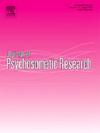Validating the 15-item stress anxiety depression scale (SAD-15) using Rasch analysis
IF 3.3
2区 医学
Q2 PSYCHIATRY
引用次数: 0
Abstract
Background
Stress, anxiety, and depression frequently co-occur in primary care, complicating accurate diagnosis and treatment. Existing screening tools typically evaluate each condition separately, which can be time consuming and inefficient. The 15-item Stress Anxiety Depression scale (SAD-15) was designed as a brief instrument to assess all three conditions simultaneously. This study examines its structural validity using Rasch measurement theory.
Methods
Data from 222 general practice patients were analyzed to assess the clinimetric properties of the SAD-15 and its subscales. Rasch analyses included tests for dimensionality, item and person fit, person separation reliability, local item dependency, differential item functioning (DIF), scale targeting, and identification of cut-off scores using the WHO-5 Well-Being Index as the criterion standard.
Results
Initial analysis of the full SAD-15 revealed poor overall fit due to local item dependency. However, when analyzed as three composite scores, the scale and subscales demonstrated excellent Rasch model fit, unidimensionality, acceptable item and person fit, and high person separation reliability (PSI 0.77–0.93). No DIF was observed across gender or age groups. The scales were well-targeted, and ROC analysis yielded optimal cut-offs of 17 for the total scale, 7 for stress, and 5 for both anxiety and depression subscales.
Conclusions
The SAD-15 shows potential as an initial screening tool for simultaneously assessing stress, anxiety, and depression in primary care. Its composite structure supports its use as a first step before condition-specific diagnostics. Further validation in clinical populations and over time is recommended.
运用Rasch分析法对15项压力焦虑抑郁量表(SAD-15)进行验证
应激、焦虑和抑郁经常在初级保健中同时发生,使准确的诊断和治疗复杂化。现有的筛选工具通常会单独评估每种情况,这既耗时又低效。15项压力焦虑抑郁量表(SAD-15)被设计为同时评估所有三种情况的简短工具。本研究运用Rasch测量理论检验其结构效度。方法对222例全科就诊患者的临床资料进行分析,评估SAD-15及其量表的临床特征。Rasch分析包括维度、项目和人的契合度、人的分离信度、局部项目依赖、差异项目功能(DIF)、量表目标,以及使用WHO-5幸福指数作为标准确定临界值。结果对完整的SAD-15的初步分析显示,由于局部项目依赖,整体契合度较差。然而,当作为三个复合分数分析时,量表和子量表表现出良好的Rasch模型拟合,单维度性,可接受的项目和人的拟合,以及较高的人分离信度(PSI为0.77-0.93)。没有观察到跨性别或年龄组的DIF。量表目标明确,ROC分析得出总量表的最佳截断值为17,压力量表为7,焦虑和抑郁量表均为5。结论:在初级保健中,SAD-15显示出作为同时评估压力、焦虑和抑郁的初步筛查工具的潜力。其复合结构支持将其用作特定条件诊断前的第一步。建议在临床人群和时间上进一步验证。
本文章由计算机程序翻译,如有差异,请以英文原文为准。
求助全文
约1分钟内获得全文
求助全文
来源期刊
CiteScore
7.40
自引率
6.40%
发文量
314
审稿时长
6.2 weeks
期刊介绍:
The Journal of Psychosomatic Research is a multidisciplinary research journal covering all aspects of the relationships between psychology and medicine. The scope is broad and ranges from basic human biological and psychological research to evaluations of treatment and services. Papers will normally be concerned with illness or patients rather than studies of healthy populations. Studies concerning special populations, such as the elderly and children and adolescents, are welcome. In addition to peer-reviewed original papers, the journal publishes editorials, reviews, and other papers related to the journal''s aims.

 求助内容:
求助内容: 应助结果提醒方式:
应助结果提醒方式:


